Table of Contents for Western Meadow Aster (Symphyotrichum campestre)
Western Meadow Aster (Symphyotrichum campestre) is a herbaceous perennial that is native to the western United States and Canada, except for Arizona and Utah. This species is a host to the Pearl Crescent (Phyciodes tharos) and American Lady (Vanessa virginiensis) butterflies and several moths. Growing from 4 inches to 1.5 feet tall, this species grows in open areas such as meadows, disturbed places, and open coniferous forests. The violet to purple ray flowers and yellow disk flowers bloom from August to October and the plant is hardy in zones 4-9.
Taxonomy and Naming of Western Meadow Aster (Symphyotrichum campestre)

Taxonomy
Western Meadow Aster (Symphyotrichum campestre) was originally named and described by Thomas Nuttall, an American botanists in 1841 as Aster campestris. In 1995, it was placed in the Symphyotrichum genus, by Guy Nesom and renamed Symphyotrichum campestre (Nesom 1994). It has kept this same name since and is a member of the Aster Family (Asteraceae).
Meaning of the Scientific and Common Names
Scientific Name
The genus name, Symphyotrichum, was re-established when the North American Aster species were renamed. It derives its name from the Greek words “Symphysis” and “thriks“, which together mean hair growing together (Wikipedia). The species name, campestre, comes from the Latin word for “country.”.
Common Name and Alternative Names
The common name comes from the general habitat of the species.
Physical Description
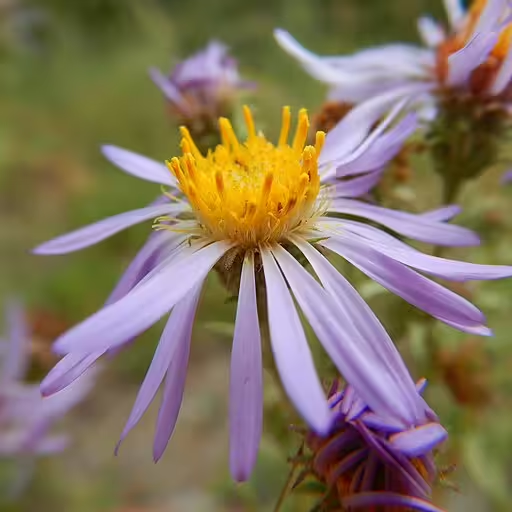
- Plant Type: This plant is a herbaceous perennial.
- Height: 4 inches to 1.5 feet tall
- Stem: The stems are erect and generally glabrous to stipitate glandular.
- Leaves: The leaves are alternate, basal and cauline, linear to oblanceolate, sessile, and have entire margins. They are 3 to 12 inches long and 0.1 to 0.4 inches wide (Flora of North America).
- Flower color: violet ray flowers, and yellow disc flowers
- Blooming period: This plant blooms from August to October.
- Fruiting type and period: This plant has achenes that mature in the late fall and winter.
Range of Western Meadow Aster in the United States and Canada
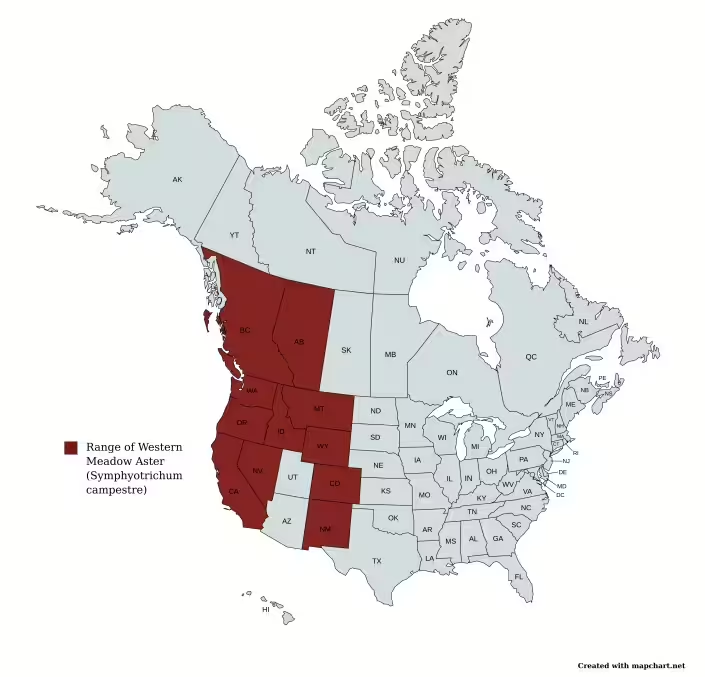
This aster species is native to the western United States and Canada, except for Arizona and Utah. It is considered to be rare in the province of Alberta.
Habitat
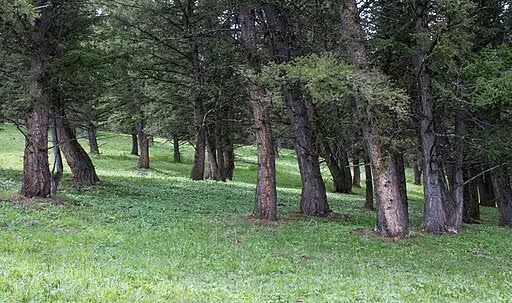
This species grows in open areas such as meadows and disturbed places, and in open coniferous forests.
Hosted Insects
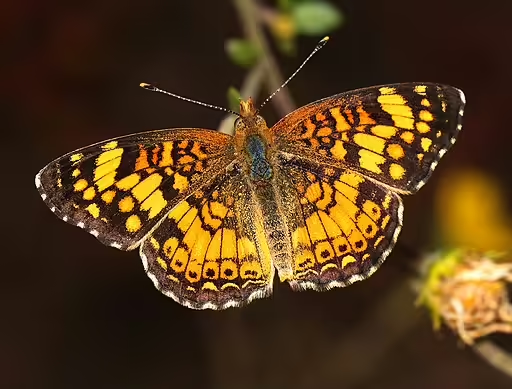
Most species of Symphyotrichum are hosts for the Pearl Crescent (Phyciodes tharos) and the American Lady (Vanessa virginiensis) butterflies. It also hosts a buck moth (Hemileuca maia) and several other moths. Western meadow aster likely also hosts the northern checkerspot (Chlosyne palla) and wavy-lined emerald (Synchlora aerata).
Other Supported Wildlife

This species is a nectar source to other butterflies, skippers, bees, and wasps during the growing season.
Frequently Asked Questions
Does this plant have any ethnobotanical uses?
The Native American Ethobotanical Database does not cite this species specifically, but asters in general have been used for medicines, jewelry, foods, and for ceremonial uses.
How is this plant distinguished from other Asters?
Of the perennial asters in California, western meadow aster is the only one that has a glandular involucre (Jepson eflora).
This species is also similar to the Fendler’s aster (Symphyotrichum fendleri), but Fendler’s aster does not have a rhizome. The thick leaves separates this aster from the oblong-leaved aster (Symphyotrichum oblongifolium), which has thin leaves.
Is this plant invasive?
This plant has not been noted as being weedy in the literature.
Gardening with Western Meadow Aster
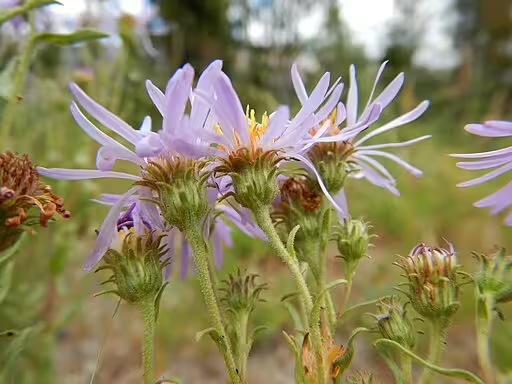
Hardiness
This species is hardy in zones 4-9. If your garden is within these zones and you have the right growing conditions (soil, moisture and exposure), you may well be able to grow this plant. However, if planted outside of its range, the hosted species may not recognize the plant or be harmed by ingesting a different species with an unfamiliar chemical composition.
Optimal Conditions
This species can grow in full sun to partial-shade in dry rocky to sandy soils.
References
- Nesom, Guy L. 1994. Review of the Taxonomy of Aster Sensu Latu (Asteraceae:Astereae), Emphasizing the New World Species. Phytologia 77(3): 141-297.


